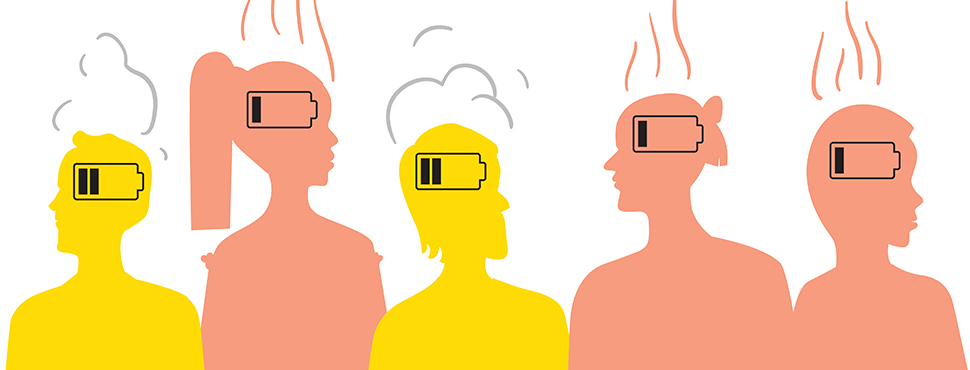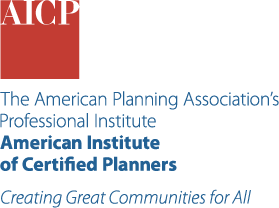Recognizing and Combating Burnout

For many, the workday rarely ends when office hours conclude. Smartphones, email, and remote file access mean that questions from leadership, concerns from stakeholders, reminders of pending tasks, and emerging issues can demand immediate attention, blurring the line between professional responsibilities and personal time.
The tools designed to increase efficiency have, in many cases, eroded boundaries, and if left unchecked, this can create a quiet but relentless strain. The result is a cycle in which opportunities to recharge become increasingly scarce. Over time, the accumulation of unfinished tasks and the expectation of being constantly available will take a toll on both focus and energy.
Understanding Burnout
When stress outpaces our ability to rest and recover, it leads to burnout. The World Health Organization classifies burnout as a syndrome resulting from chronic workplace stress, characterized by exhaustion, cynicism, and diminished professional efficacy. If left unaddressed, burnout can have a serious impact on both mental and physical well-being, ultimately affecting workplace performance.
Burnout is becoming an increasingly widespread issue; a Grant Thornton 2024 survey found that over half of U.S. employees are experiencing burnout.
Learn how to identify burnout early to safeguard not only your own health and well-being, but also the integrity and sustainability of your work.
Subtle Warning Signs of Burnout
Burnout typically presents itself gradually, so it is essential to understand the early warning signs and address them before they escalate into more serious physical, emotional, and professional consequences. Burnout will manifest in three primary areas:
Emotional exhaustion
A growing sense of dread about returning to work (such as "Sunday scaries"), combined with low motivation and the feeling that even small tasks are too much to manage.
Cynicism and detachment
Planners may find themselves becoming irritable, disengaged, or less empathetic toward colleagues and community members.
Loss of confidence
Self-doubt becomes pervasive, productivity decreases, while work feels harder, making even meaningful tasks seem cumbersome.
When someone is experiencing burnout but hasn't yet recognized it, they may rationalize or minimize their symptoms to keep functioning at the same pace to meet the expectations they or others have set for them. Exhaustion is dismissed as temporary. Irritability is often attributed to workload or circumstances. A growing loss of confidence is attributed to pressure rather than depletion.
In a profession like planning, where constant pressure and overextension are typical, it is surprisingly easy to develop an inner narrative for why feeling drained or disengaged is normal. It may seem like it is "just stress" at first, but the consequences can be serious if burnout is allowed to persist.
Risk of Deepening Burnout
As burnout deepens, the body sends additional signals, such as headaches, muscle tension, and digestive issues. Additionally, the sense of purpose in your work can fade, replaced by feelings of powerlessness and a gradual departure from professional engagement. Over time, burnout can diminish overall quality of life and increase the risk of sleep disturbances, cognitive decline, diabetes, and cardiovascular disease.
Without intervention, burnout can become a self-perpetuating cycle: exhaustion leads to reduced performance, which triggers guilt and pressure to work harder, which further depletes energy.
Eventually, this cycle can result in emotional exhaustion so severe that recovery requires extended time away from work or professional help. Recognizing the signs early is key to preventing burnout from reaching this point.
Strategies to Prevent and Manage Burnout
The Mayo Clinic offers a series of questions to help individuals determine if they may be experiencing burnout. These questions encourage reflection on everyday experiences such as feeling disillusioned about work, lacking the energy to be productive, or finding it difficult to concentrate or take satisfaction in accomplishments. Considering these patterns with honesty can help distinguish ordinary stress from the deeper fatigue and disengagement that signal burnout.
There are several strategies you can adopt to combat burnout:
Set clear boundaries
This foundational step involves limiting after-hours emails, protecting vacation time, and taking breaks. Establishing firm professional boundaries helps preserve energy and quiet the constant sense of urgency.
Nurture connections
Building relationships with colleagues, mentors, or peers who understand the pressures of planning creates a sense of shared experience and perspective. Talking openly about challenges helps normalize stress and reminds planners they're not alone in facing it. Sharing ideas, frustrations, or a laugh about the day can help release tension and reset one's mindset.
Build resilience
Small, intentional habits, like noticing positive moments, practicing gratitude, and showing self-compassion, can shift focus from what is negative to positive. Strengthening resilience can help you recover from stress and stay grounded during challenging times.
Get tips for building your own personal resilience.
Reframe success
Instead of measuring value solely by significant, multi-year outcomes, you can benefit from recognizing incremental progress. Advancing a zoning amendment, submitting a grant, or completing a section of a comprehensive plan are all meaningful milestones that can reenergize.
Practice self-care
"Me time" matters! Prioritizing personal well-being is essential for preserving energy and focus. Regular exercise, adequate sleep, and a healthy diet will support physical resilience, while activities or hobbies outside of work can help clear the mind and give one a sense of purpose. Scheduling time for rest and recovery is essential in averting burnout.
Well-Being as a Foundation for Good Planning
Burnout is not inevitable, but it requires attention and intention to prevent. Recognizing early signs like fatigue, cynicism, and declining motivation allows you to pause and reset before exhaustion becomes deeply rooted.
Building resilience, cultivating supportive relationships, and maintaining healthy boundaries protect you and sustain the integrity of the planning profession itself. Energized, supported planners show up with creativity, empathy, and patience. They are better able to engage authentically with community members, balance competing priorities, and develop effective solutions to advance public safety, equity, and accessibility. Taking care of oneself is an act of good planning because thriving planners build thriving communities.
Additional Resources
"Get Outside! Improve Your Mental Health and Well-Being," APA blog
"Building Professional Sustainability: Small Habits to Improve Your Ability to Cope with Stress," APA blog
It's Not Personal: Self-Care Tips to Avoid Burnout, Conflict, and Contentious Community Meetings, Passport
"Three Ways to Build Your Personal Resilience," APA blog
Top image: iStock/Getty Images Plus - Alona Horkova
About the author


